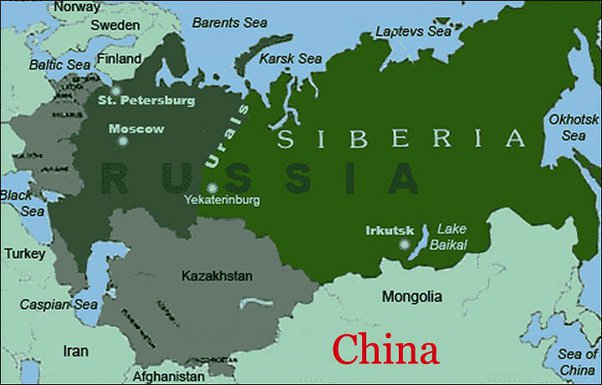This post first appeared on Today in Alternate History with assistance from Philip Ebberell.
June 1st, 1992

Defeated
in the Cold War, the Soviet Union quickly lost control of her satellite
states and then began to balkanize. Various determined attempts were
made to form a Russian Federation and sign a Siberian Agreement, but
ultimately the force of nationalism sweeping across Eurasia was simply
too strong. Representatives from Novosibirsk argued that the demands of
Siberians were ignored and consequently they would "accelerate the
creation of a Siberian republic." For this long-term project, they would
need international assistance and hence the
necessity of the Novosibirsk Agreement. With talks going nowhere,
and the Soviet Union beginning to break-up, hard-line communists seized
control the country in order to maintain rule from the Kremlin.
Unfortunately for more moderate Russian nationalists, there had been too
little time for the aging drunk coup leaders to be replaced with a
credible new leadership who given the time might possibly have built
trust around a new consensus.
Unlike the break-up crisis in the
former Yugoslavia, the nation did not slide into civil war. Instead,
complete dissolution led to the creation of multiple autonomous regions.
In the west, First-World living standards created the expectation of a
new modern state emerging through market orientation. The reality of
such an economic project was that the shocks of market transition and
liberalization might be better controlled in a smaller rump state than
in a vast federation.
Siberia, no longer defended by Moscow, was
largely unprotected and did not have the resources to self-organize. Equally
importantly, international assistance was required to construct the Chita-Khabarovsk Highway. In time, this infrastructure would become as significant as the Trans-Siberian Railway
had been earlier in the twentieth century. To the suspicions of
anti-globalists, President George Bush had strong connections to the oil
and gas industry, having successfully run an extraction company in west
Texas.
Only six months out from re-election, he would claim the Novosibirsk Agreement
was in the "interests of all mankind," a key plank in the building of
the new world order. Bolstered by the realization of what he would
disparagingly call this "vision thing," Bush would narrowly defeat
Arkansas Governor Bill Clinton in the fall.
Cynics would argue Bush's vision of "planetary resource storehouses" was
a thinly disguised neo-conservative play by the American hyper-power.
In fact, the idea dated back a century to American geopolitician Admiral Mahan
who argued "highly civilized states accumulate surplus energy. This
energy should be directed to conquering new spaces in the very near
future." Regardless of the triumphalism, the US had circumvented their
worst case scenario, the emergence of a strong man who wanted to siphon
off the land-locked wealth using China. By the time that Bush passed in
2018, Siberia would be undergoing a second revolution with the help of this emerging technocracy.
Author's Note
In reality, while it was much smaller than the Soviet Union, the Russian Federation did not dissolve; however, there is a broad view that Siberia will eventually secede.
In
the documentary film called Russia. New History, Vladmir Putin
describes the 1991 break-up as
"a major humanitarian tragedy. It was a disintegration of historical
Russia under the name of the Soviet Union. We turned into a completely
different country. And what had been built up over 1,000 years was
largely lost."Provine's AddendumThree decades after the Novosibirsk Agreement, Siberia was a very different region than it had been under Soviet rule. International investment often dubbed by critics as a "resource grab" had sponsored extensive infrastructure and brought in a generation of immigrant workers, many of whom settled in government-sponsored programs for increasing population. The 2008 Recession combined with increased use of hydraulic fracking hamstrung the Siberian economy, which had grown so rapidly through the '90s that it was dubbed the "Siberian Tiger" in comparison with similar tiger economies in Southeast Asia. After some recovery in the 2010s primarily from ecotourism, the 2020 Pandemic virtually shut down the Siberian economy, leaving the region's future in question. Over a dozen
sovereign nations, including the remaining members of the UN Security
Council, gathered in Novosibirsk to sign a historic agreement to
regulate international relations with respect to Siberia. Loosely based
upon the Antarctic Treaty System,
this nation-building framework was designed to protect rich oil and gas
reserves as well as the security of forty million Siberians sparsely
populating a vast region of 13.1 million square kilometers.
No comments:
Post a Comment